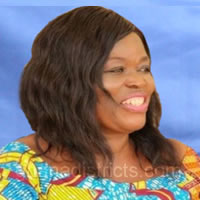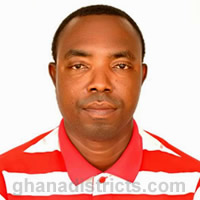Governance in the municipality consist of the modern and traditional components.
The Assembly is the highest political, administrative and developmental body. It is supported by other institutions, organizations and stakeholders – ministries, departments and agencies (MDAs), traditional authorities and civil society organizations as well as development partners in the performance of its duties.
The legal framework backing the existence of the Assembly is combined in the following legislations.
• Chapter 20 of the Fourth Republican Constitution of 1992
• PNDC Law 2007 of 1988
• Local Government Act of 1993, Act 462
• Legislative Instrument (L.I.) 1429 that established it:
Composition of the Suhum Municipal Assembly
SMA has a total of Eighty Four (84) members made up as follows:
• Fifty-Nine (59) members elected by the voters of 48 electoral areas of the through direct and non partisan elections.
• Twenty-Five (25) members appointed by the President of the Republic for one specialized attribute or another and
• The Municipal Chief Executive as well as the two Members of Parliament .
In pursuance of the decentralization policy the Municipality is sub-divided into six sub-districts under one urban and five area councils namely Suhum, and Akorabo, Anum Apapam, Nankese and Obeasua respectively.
General House
At the apex is the General House of the Assembly with which has a four year term under the Presiding Member who is elected for a two-year renewable term. House district and must meet at least three times in the calendar year.
It has two main committees namely the Executive Committee and the Public Relations and Complaints Committee.
Executive Committee
• Composed of one third of the membership of the Assembly it is chaired by the Municipal Chief Executive.
• It is in charge of the affairs of the Assembly in between sessions.
Municipal Chief Executive
He is appointed (nominated) by the President and confirmed by two-thirds of the members of the Assembly present at the meeting for that purpose.
The MCE reports the deliberations of the Executive Committee to the General House during the latter’s meetings.
Sub-Committees of the Executive Committee
The Executive Committee has eight (8) sub-committees namely Finance and Administration, Development Planning, Works, Social Services, Justice and Security, Agriculture, Education and Environment and Sanitation. The first five are statutory while the rest were created by the Assembly itself.
These sub-committees deliberate on relevant matters with the support of the MDAs in the district and report to the Executive Committee.
Municipal Co-ordinating Directorate
The Municipal Co-ordinating Directorate is under the MCD who is the Secretary and Advisor of the Assembly. He works directly under the Chief Executive. Heads of MDAs in particular the decentralized ones work up to him hence his title.
The Municipal Co-ordinating Director is in charge of the technical aspect of the administration . However, the Internal Audit Unit by Law report directly to the Presiding Member.
Sub- Structure
The sub structures are the Urban and Area Council, Electoral Areas and Unit Committees.
The Urban and Area Councils are made of selected Assembly members and representative of the chairpersons of Unit Committees. The Councilors perform functions assigned to them among them mobilizing revenue, plan preparation and implementation and community mobilization.
Electoral Areas
The six sub-structure are in turn divided into electoral areas with the following numbers: Suhum (12), Akorabo (7), Anum Apapam (5), Coaltar (9), Obeasua (9) and Nankese (6) giving a total of forty – eight (48).
Unit Committees
The 48 electoral areas are made up of units. The number of units per electoral area ranges from one (1) to as many as five (5).
Each Unit is supposed to have a 15-member committee with ten (10) elected and five (5) appointed by the government. However, in the last district level elections (2006) some of the elected positions could not be filled.
The Unit Committees are responsible for the local and community affairs and serve as the link between the said communities and the SubCouncils.
Functions of the Assembly
As stipulated in the Local Government Act of 1993, Act 463 the functions and duties of the Assembly are inter alia
• Administration of the assembly
• Mobilization of the human, natural and financial resources of the district for development
• Preparation and implementation of development plans and annual budget
• Provision of basic services
• Co-ordinating of security
The Assembly is aided in the performance of its duties by the various government ministries, departments and agencies (MDAs) in the municipality or assigned to the Assembly. MDAs can be divided into decentralized and non-decentralized. Most of the former are existent in the municipality and under the New Local Government Service arrangement may be classified as follows:
The Departments of the Municipal Assembly
EXISTING DEPARTMENTS/UNITS
NEW GROUPINGS
1 . Co-ordinating Directorate
• MPCU Secretariat
• Internal Audit Unit (IAU)
• Stores
• Personnel
• Records Central Administration Department
2. Municipal Finance Office
Finance Department
3. Ghana Education Service
• Youth Council
• Ghana Library Board
• Sports Council
Education, Youth and Sports Department
4. Ghana Health Service
• Environmental Health Unit
Department of Health
5. Town and Country Planning Dept
Department of Parks and Gardens
Department of Physical Planning
6 . Department of Agriculture
Ministry of Foods and Agriculture
7. Department of Social Welfare
• Department of Community
Dept Social Welfare and
Community Development Department
8 Waste Management Department
9. Municipal Budget Analyst
Budget and Rating Department
10. National Board for Small Scale Industries
• Department of Co-operatives
• Ghana Tourist Board
11. Department of Trade and Industry
• Municipal Works Department
• Department of Feeder Roads
• Public Works Department
• Municipal Water and Sanitation Team
Department of works
12. Department of Wildlife
Forestry Service Division
Natural Resources Conservation Department
Departments without offices in the municipality
Most of the existing decentralized departments have the following problems:
• Inadequate personnel in terms of quantity and quality
• Inadequate office and residential accommodation.
Relationship of Assembly and MDAs
The Municipal Administration as the Supreme Body at the assembly level is empowered to co-ordinate and integrates all the functions of the agencies and departments at the district level.
It has been realized however, that some of the decentralized departments still maintain some sort of relations with both their regional and national offices.
This state of affairs in most cases makes it rather difficult for the Assembly to derive the requisite co-operation from the departments in the process of formulating and implementation or plans and programmes.
There have been appreciable levels of co-operation between the Assembly and the decentralized department. The departmental heads in the districts are ex-officio members of the Assembly, and are required by law to participate in the legislative and deliberative activities of the Assembly by making inputs into the deliberations of Assembly.
Inter-organization and Planning Procedures
By the stipulations of the Local Government Act 1993 of development plans, projects and programmes must necessarily be identified and developed at two levels:
a. The Local Community level
b. Municipal Plan Co-ordination Unit level.
For effective utilization of available resources and the promotion of co-operation among the various Assemblies in the region, the Regional Co-ordinating Council (RCC) acts as an advisory organ which guides the development and implementation of joint district projects which fall within the framework of the national development policy.
The new local government system which brings governance to the local people and encourage grassroot population to participate in development activities the communities requires the following groups, among others, to sensitize and encourage the communities to get involved in determining what their needs are, identify the resources available to them and participate in the project implementation and management. These groups and organizations include:
Unit Committees;
? Area/Urban Councils
? Assembly Members;
? Chiefs, Elders, Opinion Leaders
? Non-Governmental Organizations (NGOS) and
? Community Based Organization (CBOs)
Public Participation in governance
It has been reorganized that development should be in response to the priority needs of the citizenry and that it is a shared responsibility. The Assembly performs these roles in close collaboration with the traditional authorities, civil society organizations and the private sector in the rural development process.
Citizenry participation approach has increased the people’s responsiveness to Assembly intervention towards addressing the peoples felt needs. this approach has raised the people’s responsiveness to their task and other civil obligations and enhance revenue collection by the Assembly.
The Assembly involves the various groups under the civic union including market woman, and Chiefs in its fee fixing and budgeting activities. The Fees and Rates for the past years have been fixed with constant discussion with the leadership of civic society organizations and their inputs included in the final decisions.
Similarly, the annual budgets have been subjected to public hearings prior to ratification by the General Assembly.
These public participation forums have provided the Assembly with a better understanding of most of the common local priorities.
For the communities to participate effectively in project identification and development the Assembly has organized durbars and for a public firms to enable stakeholders and citizens to deliberate and build consensus on the projects and programmes which constitute their ‘felt needs’.
Steps which have been approved by the Assembly and the Executive committee are presented to the electorate for review. Presently the level of local/common participation in such decisions is quite encouraging and with the presence of NGOS like GAIT and local CBOs it is hoped participation will go up.
During the implementation of approved projects, the Assembly, in many cases, makes available inputs like funds, construction materials, machinery, equipment and technical staff to communities.
The recipient communities on their part participate by providing funding in some cases, labour and some civil construction materials where they are available.
The communities through the committees which are formed to enhance the implementation of the projects undertake monitoring in collaboration with the technical staff who is assigned to the project by the District Assemblies.
Traditional Authority
The Overlord of the municipality is the Okyehene or King of Akyem Abuakwa with his seat at Kyebi the capital of the neighboring East Akyem Municipal. The important chiefs in the municipality though mostly of settler stock origin are numbers of the Akyem Abuakwa Traditional Council.
The Okyenhene has recently elevated some of the chiefs to the states of OSABARIMA and BARIMA. Under the important chiefs are Village Chiefs. Chiefs are normally chosen from lineage from the ethnic groups that first settled the village town.
Chiefs in the municipality are regarded as the heads of their communities and perform a lot of functions including judicial ones that boarder on customs and traditions and are also rallying points for community development.
Date Created : 11/27/2017 3:24:45 AM






 facebook
facebook twitter
twitter Youtube
Youtube TOLL FREE 0800 430 430
TOLL FREE 0800 430 430 +233 593 831 280
+233 593 831 280 GPS: GE-231-4383
GPS: GE-231-4383 info@ghanadistricts.com
info@ghanadistricts.com Box GP1044, Accra, Ghana
Box GP1044, Accra, Ghana